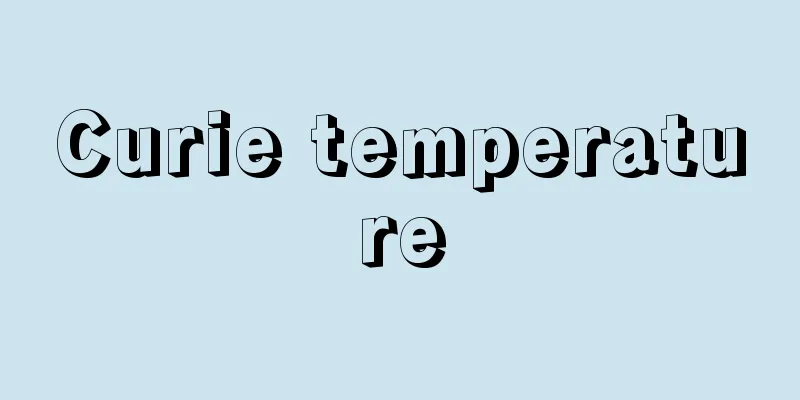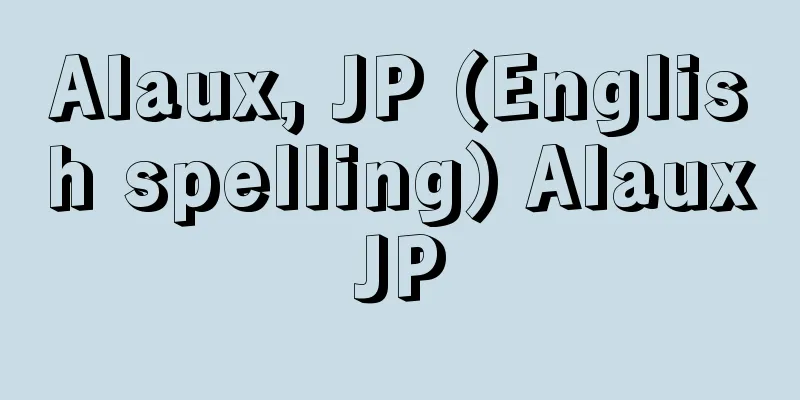Curie temperature

|
When ferromagnetic materials such as iron, cobalt, and nickel are heated, the spontaneous magnetization disappears at a certain temperature. This is because the magnetic moments in these materials, which are aligned in parallel at low temperatures, become disordered above a certain temperature. This phenomenon was discovered by P. Curie (1895), and is therefore called the Curie temperature or Curie point. Data on the temperature change of magnetization of iron measured by Curie shows that magnetization disappears at about 750°C. Today, the Curie temperatures of iron, cobalt, and nickel are known to be approximately 1044K, 1388K, and 631K, respectively, in absolute temperature. At the Curie temperature Tc , large anomalies appear in various physical quantities. For example, the magnetic susceptibility above Tc becomes infinite at Tc , and the specific heat also shows a sharp peak. In addition, electrical resistance, thermoelectric power, and thermal expansion also show anomalies. Such phenomena are called critical phenomena. The way in which these anomalies appear is determined primarily by the anisotropy of the magnetic moments (is it arranged isotropically or anisotropically) and the dimension of the arrangement of the magnetic moments (is it three-dimensional or lower-dimensional), so research into critical phenomena is important in order to obtain information about these. Among ferromagnetic metals, there are some whose thermal expansion changes significantly at the Curie temperature, canceling out normal thermal expansion and resulting in no apparent thermal expansion. This phenomenon is called the Invar effect. The most typical material that exhibits this effect is an iron-nickel alloy (Fe 65 -Ni 35 ) called Invar, which is used in metal parts that do not tolerate thermal expansion, such as rulers and watch springs. In addition, the electrical resistance of certain ferromagnetic manganese compounds changes from that of an insulator to that of a metal at the Curie temperature. Using this effect, the electrical resistance can be significantly changed by applying a magnetic field, which is called the giant magnetoresistance effect. [Yoshikazu Ishikawa, Sumio Ishihara] [Reference] | | |Source: Shogakukan Encyclopedia Nipponica About Encyclopedia Nipponica Information | Legend |
|
鉄、コバルト、ニッケルのような強磁性体を熱すると、特定の温度で自発磁化が消失する。これは、低温で平行に配列していたこの物質の中の磁気モーメントが、特定の温度以上で無秩序となるためである。この現象はP・キュリーによってみいだされた(1895)ので、キュリー温度またはキュリー点とよばれている。キュリーによって測定された鉄の磁化の温度変化のデータをみると、磁化が約750℃で消失していることがわかる。鉄、コバルト、ニッケルのキュリー温度は、今日では絶対温度でそれぞれ約1044K、1388K、631Kであることが知られている。 キュリー温度Tcで種々の物理量に大きな異常が現れる。たとえば、Tcより高温の磁化率はTcで無限大となり、比熱も鋭いピークを示す。また電気抵抗、熱起電力、熱膨張もそれぞれ異常を示す。このような現象を臨界現象とよぶ。この異常の現れ方は、主として磁気モーメントの異方性(等方的に配列するか異方的か)と、磁気モーメントの配列の次元(三次元的かもっと低次元的か)によって定まるので、臨界現象の研究はこれらについての情報を得るために重要である。 金属強磁性体のなかには、キュリー温度での熱膨張の変化が大きく、通常の熱膨張を打ち消すため、結果的に見かけ上は熱膨張がない物質がある。この現象をインバー効果とよぶ。この効果を示すもっとも典型的な物質は、インバーとよばれる鉄‐ニッケル合金(Fe65-Ni35)で、物差しや時計のぜんまいなど熱膨張を嫌う金属部分に用いられている。またある種の強磁性マンガン化合物では、キュリー温度において電気抵抗が絶縁体的なものから金属的なものとなる。これを利用して、磁場を加えることで電気抵抗を大きく変えることができ、これは巨大磁気抵抗効果とよばれている。 [石川義和・石原純夫] [参照項目] | | |出典 小学館 日本大百科全書(ニッポニカ)日本大百科全書(ニッポニカ)について 情報 | 凡例 |
Recommend
Shigeyori Kawagoe
Year of death: Bunji 1 (1185) Year of birth: Year ...
Charismatic government official
...The trigger for the change in the concept of c...
Trachurus mediterraneus (English spelling) Trachurusmediterraneus
…[Hiroshi Fukuda]. … *Some of the terminology tha...
Paquet, A. (English spelling) PaquetA
...It is also called "documentary theatre&qu...
Volcanologist - kazanronsha
...After studying at the universities of Halle an...
"Awashima Garden Bamboo"
… [Takoshima Nao] [Awashima Mono] This refers to ...
Kose Yuji - Kose no Oji
Year of death: Jinki 1.6.6 (724.6.30) Year of birt...
Irikiin Monjo Documents
...On the other hand, the Shibuya clan was origin...
Azuma Daikoku Umbrella
…During the Kyowa period (1801-04), Daikokuya umb...
Pleiospilos
... Bergeranthus is a small, colonial plant with ...
Oxygen inhalation
Inhalation of oxygen or air with high oxygen parti...
Romanov Dynasty
The name of the dynasty that ruled Russia from 161...
Yoshiumi [town] - Yoshiumi
A former town in Ochi County in northern Ehime Pre...
Yoshiyasu Kira
?-? A military commander in the Sengoku period. T...
Nurse - Eji
Soldiers in the Nara period. Part of the soldiers...









